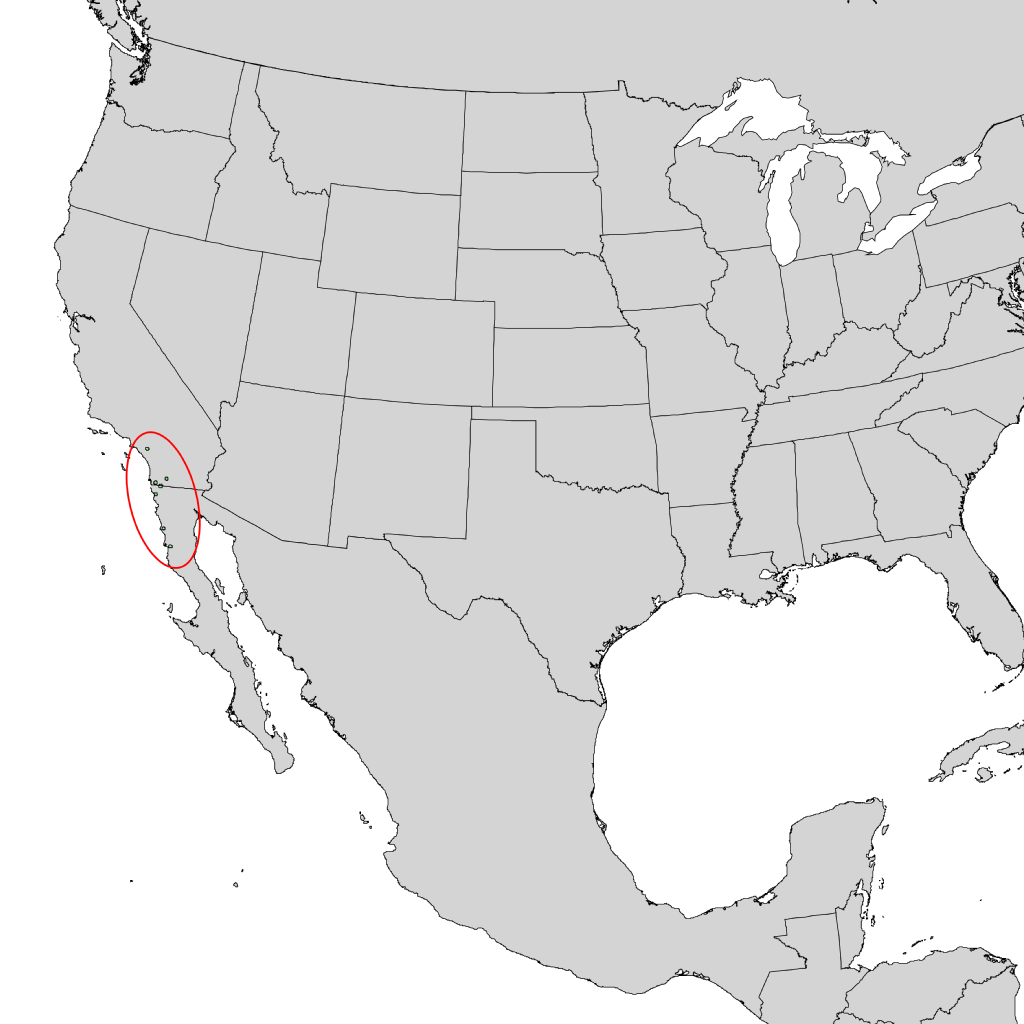The two-marked treehopper is not a species that moves around the landscape very much. While males will venture out into the environment in search of mates, females tend to live out their whole lives feeding and breeding on the tree upon which they were born. After mating, a female will lay her eggs within the stem of the host tree. The eggs overwinter in a sticky secretion called “egg froth.” This egg froth not only protects the eggs, it is also full of pheromones that signal to other females in the area to lay their eggs near by. The nymphs of the two-marked treehopper are gregarious. There is safety in numbers and the more nymphs hanging out on a branch, the less likely any single individual will be attacked by a predator.
Come spring, as trees begin to break dormancy, eggs laid the previous summer get the cue to hatch as sap begins to flow. Since treehoppers are sap feeders, this signal is essentially a ringing dinner bell. Apparently the specificity of this sap feeding habit is one of the reasons these treehoppers are so specific about their host.
As I mentioned earlier, the two-marked treehopper is not a single species but rather a complex of distinct taxonomic units. All of this cryptic diversity has to do with their preferred trees as each species within the complex feeds and breeds on a specific genus of tree/shrub: Carya, Celastrus, Cercis, Juglans, Liriodendron, Ptelea, Robinia, and Viburnum. Because no two tree species are alike, each has its own phenology. Different trees leaf out and begin growth at different times. Different tree species have different chemicals and nutrients in their sap. Also, different tree species have different wood densities. All of these factors and more have left their mark on the evolution of two-marked treehoppers.
Because females generally don’t leave the trees on which they were born, their offspring will inevitably be born on the same species of tree. This means they will be raised on a diet of the same sap as their mother. As mentioned, different trees produce different kinds of sap, which means that the digestive systems of these insects become highly tuned to their specific host tree. By experimentally moving two-marked treehopper nymphs to different host trees and tracking their development, scientists have also been able to demonstrate that host switching does not work well for the treehoppers. Nymphs raised on species different than the tree on which their eggs were laid do not develop as well or at all. It appears that their specific feeding habits are entirely tuned to the chemical composition of their host sap.
Additionally, the phenology of their host tree life cycle means that species raised on different trees rarely sync up in nature. Some trees force their resident treehoppers to emerge and mate earlier than others and vice versa. Evidence for this was made even stronger by studying these dynamics in the human environment.
The preferred hosts of two-marked treehoppers rarely grow in the same habitats in nature. However, thanks to our gardening and landscaping efforts, it isn’t hard to find these species in close proximity in the human environment. In cases where different host trees are found only a few meters from one another, the specific feeding requirements of each species means that species barriers among different treehopper populations are maintained. However, even before offspring enter into the picture, host trees also seem to have an effect on two-marked treehopper mating habits.



![Waveforms of male signals for nine species in the Enchenopa binotata complex based on host tree identity [SOURCE].](https://images.squarespace-cdn.com/content/v1/544591e6e4b0135285aeb5b6/1594054293879-I5KJI60173XWLJ6OP7HB/Varying_male_signals_that_species_of_Enchenop_binotata_make.png)
















